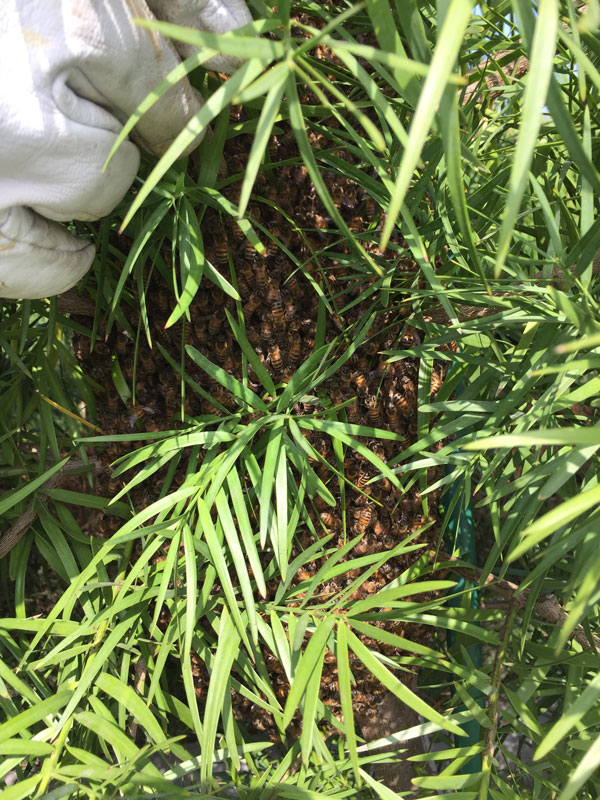
SoCal Beekeeping
Bee Vacuum
8/21/2017
Michael Henderson
I'll start this blog by talking about the bee vacuum that I developed. There are a lot of different designs for bee vacuums and probably a number similar to mine.

Let me start by talking about "Why a bee vacuum?". It doesn't matter whether you're going to pick up a swarm hanging in a tree, or doing a cutout in a building. You need some way to capture the bees and transfer them to a regular hive body without causing excessive stress to the bees.
A bee vacuum goes a long way to meeting those goals. You can suck up the bees without disturbing the remaining bees too much, until you have captured the majority of the bees of the swarm or cutout. In a cutout there's almost no other way to capture the bees. I had a swarm that was in the center of a small shrub and there was no way to get the bees out other than with a bee vacuum. Here's a picture of that swarm

And here I am retrieving that swarm with the bee vacuum. This was a really nice group of bees - large and docile.

[Aside note] When removing an existing hive (a cutout), the foragers will be out working while you're taking the hive. When they return, they will cluster in the old hive. I always try to go back in the evening to collect these bees. Other beekeepers have told me that doing that is useless because the foragers have already oriented to the old hive location and will return there - but that's not what I've found. If I go back the following day, after joining the foragers with their hive mates, I do not find a lot of bees in the old hive area. So I assume the foragers have oriented to the new hive. [End aside note]
The bee vacuum is the size of a hive body so after I've captured all the bees, I put it on a full size brood body and open the bottom of the hive. This video describes the process.
If you're interested in building one, you can find a tutorial here.